ANIMUS FEMINA
Feature lenght documentary – 1h40
Productions — Films d’ici Méditerranée / Les films du Tambour de soie
Distribution — Dean distribution
“Not content with the fact that we humans are tenants of an insignificant planet lost in the cosmos [thank you Copernicus], that we are descendants of apes [thank you Darwin] and that we are not even masters of our own consciousness [thank you Freud], we are now back where we belong among the animals [thank you Descola]”.
Olivier Bron and Simon Libermann
VISION

©Isis Olivier
In the Upper Paleolithic Age (45,000 years ago), animals occupied 97% of the space and humans 3%. Today, the ratio is reversed: 97% for the “invasive species” (Hublin), 3% for wild species.
The domination of human beings in the general balance weighs on lives other than our own: in the air, in freshwater, in saltwater, on land, underground. At the same time, it accentuates social injustices, making ecological responses difficult. By refusing to accept the paternity of capitalism, which crushes humans and non-humans deprived of any means of defense, everything is worth fighting for so that grief and anger cease to bind our ankles, and so that peaceful relations with wild animals make this planet habitable.
Wonder at the beauty of animals is a rallying cry for environmental protection. Nature transformed into majestic spectacles is already at the heart of many works. Animus femina goes further, proposing to think and act in the face of the tragedy that concerns us all, without militancy, simply by shifting the focus of the narrative.
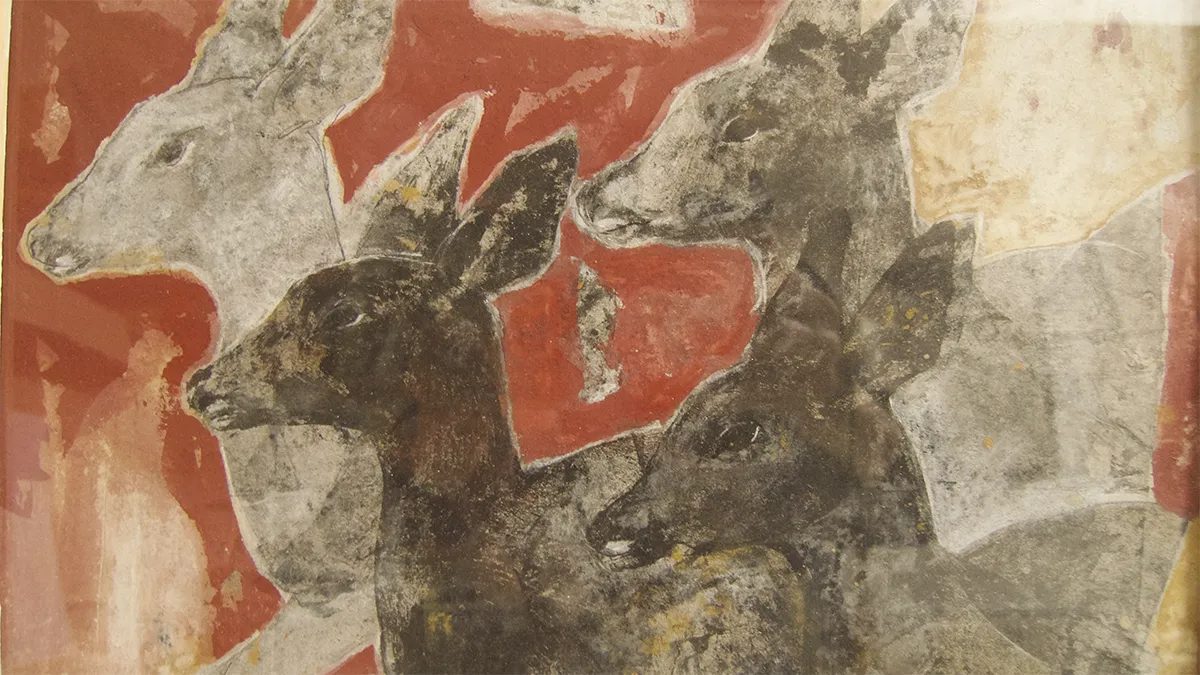
©Isis Olivier
The fauna remains a source of wonder, but the film doesn’t dwell on the spectacle itself – which has already been the subject of numerous films. Animus takes a stand, suggests that we think and act in the light of the impending tragedy, without militancy, simply by asking the questions that will challenge those who refuse to recognise the paternity of capitalism.
I SEE ANIMUS AS…
devoting attention to a broken wing, the dazzling effect of a charcoal stroke, or a shudder at the sound of the tawny owl in concert with the distant call of wolves.
I SEE ANIMUS AS…
decanting the mental traps with their accumulated clutter of falsehood, certainties without a future. A vision that shifts away from destruction and from approaches that automatically separate and establish a hierarchy without taking the outside world into account.
I SEE ANIMUS AS…
keeping watch on what we cherish in order to grow. Seeing the beauty before us, so that our feet are no longer bound by sorrow and anger.
BIRTH
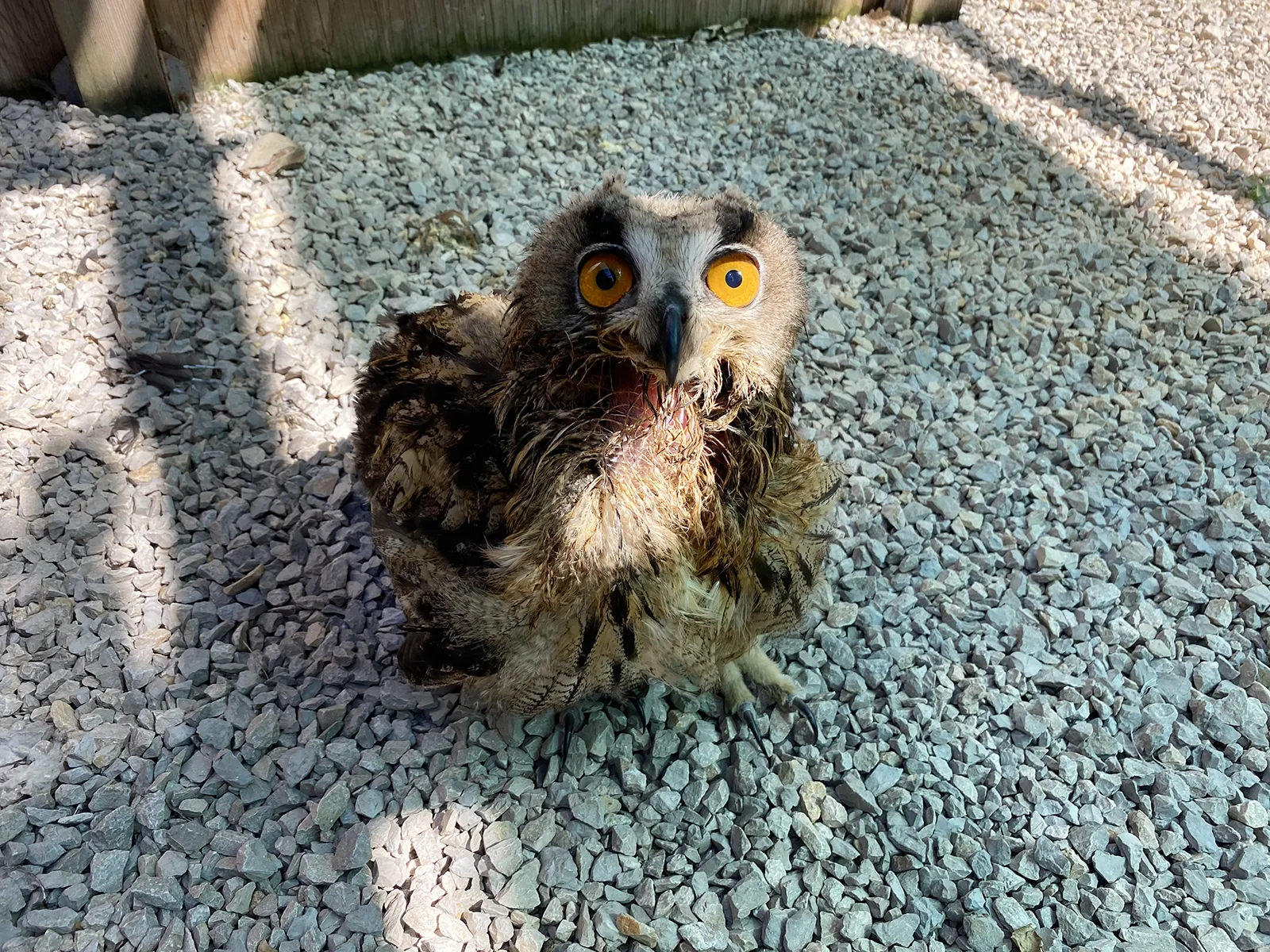
Vulture at the Wildlife Hospital
This film was created from a spark of light, on meeting the patients in the care of Marie-Pierre Puech, a vet and activist who founded the Hôpital de la Faune Sauvage (wildlife hospital) in Ganges. She heals and then sets free animals that have been damaged by humans, an opportunity for her to draw attention to our collective house that is burning and to ‘repair’ Sapiens. Watching her provide care evoked the feelings and empathy that I’ve felt for animals ever since childhood, often in situations of abuse of power, which revolts me. And I relate this to other beings in a situation of weakness with no capacity to respond. Later, I associated the brutal mechanics of these situations with women and racialized persons. Eco-feminism has conceptualized the links between patriarchate and the enslavement of the environment and that of women; some, like Françoise Vergès, would add “decolonial feminism”.
The thinking behind it
Small best-off animal – 3′
This encounter brought me back to the heart of my own ethnographic research, which is driven by a strong desire to modernize an axiomatic that is trapped in anthropocentric universalism, particularly problematic when working in African societies.
Alongside people who I admire like Bruno Latour et Philippe Descola, I feel that our categories no longer hold up in the face of a crisis that is hitting us all from within: breathing, living, moving, eating, dressing, swimming, heating, washing, caring for ourselves, educating…
I was drawn to Philippe Descola’s ‘anthropology of nature’, which tackles the sacrosanct foundations of Western thought: the great binary oppositions, the universalism of the Enlightenment founded on the central role of the white man [vs Gender vs Race] and a violent liberalism based on social inequalities, as the work of Didier Fassin shows. Bruno Latour, for his part, emphasizes the need to “repopulate the social world with non-humans”, based on their interactions and skills, if we are to break free from determinism.
Other intellectuals also played an important role in this movement of thought: Glenn Albrecht, Donna Haraway, Anna Tsing, Baptiste Morizot, Corine Pelluchon, James Scott, Pierre Charbonier…
Their reflections challenge our categories to take into account the continuities and interconnections that underpin interspecies experience.
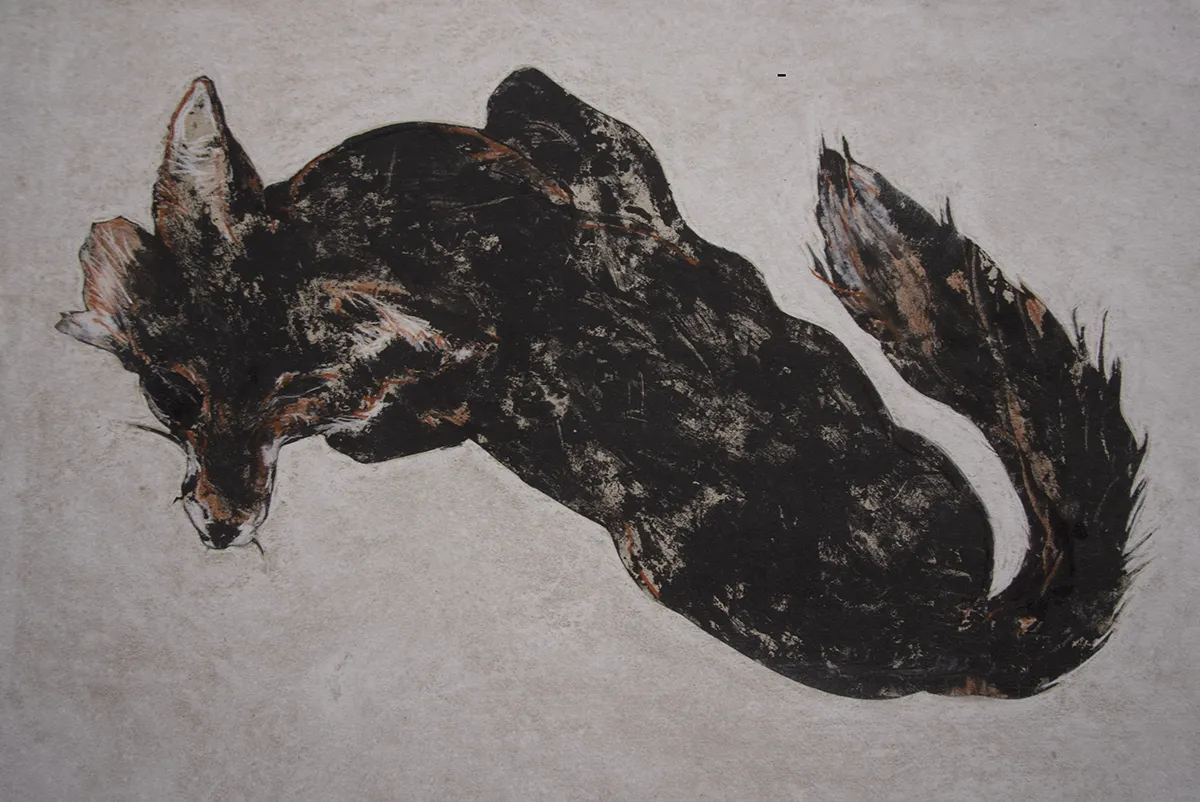
©Isis Olivier
This interdisciplinary movement cant’do without the artistic dimension. As soon as humans became sapiens-sapiens, they entered deep into caves, where they first depicted animals. Entirely there. With grace. With magnificence. Everything making sense, “not a notional sense, but a direction of our existence” (Merleau-Ponty): ours still today, through the emotion aroused by these animal figures.
FOUR WEAVERS OF WORLDS
I chose a narrative in four voices, in accordance with the feelings of revolt that drive me. Four women who, through their own skills, reweave the ties that “Modern” society (in the Latourian sense) has broken and hierarchized.
Sara
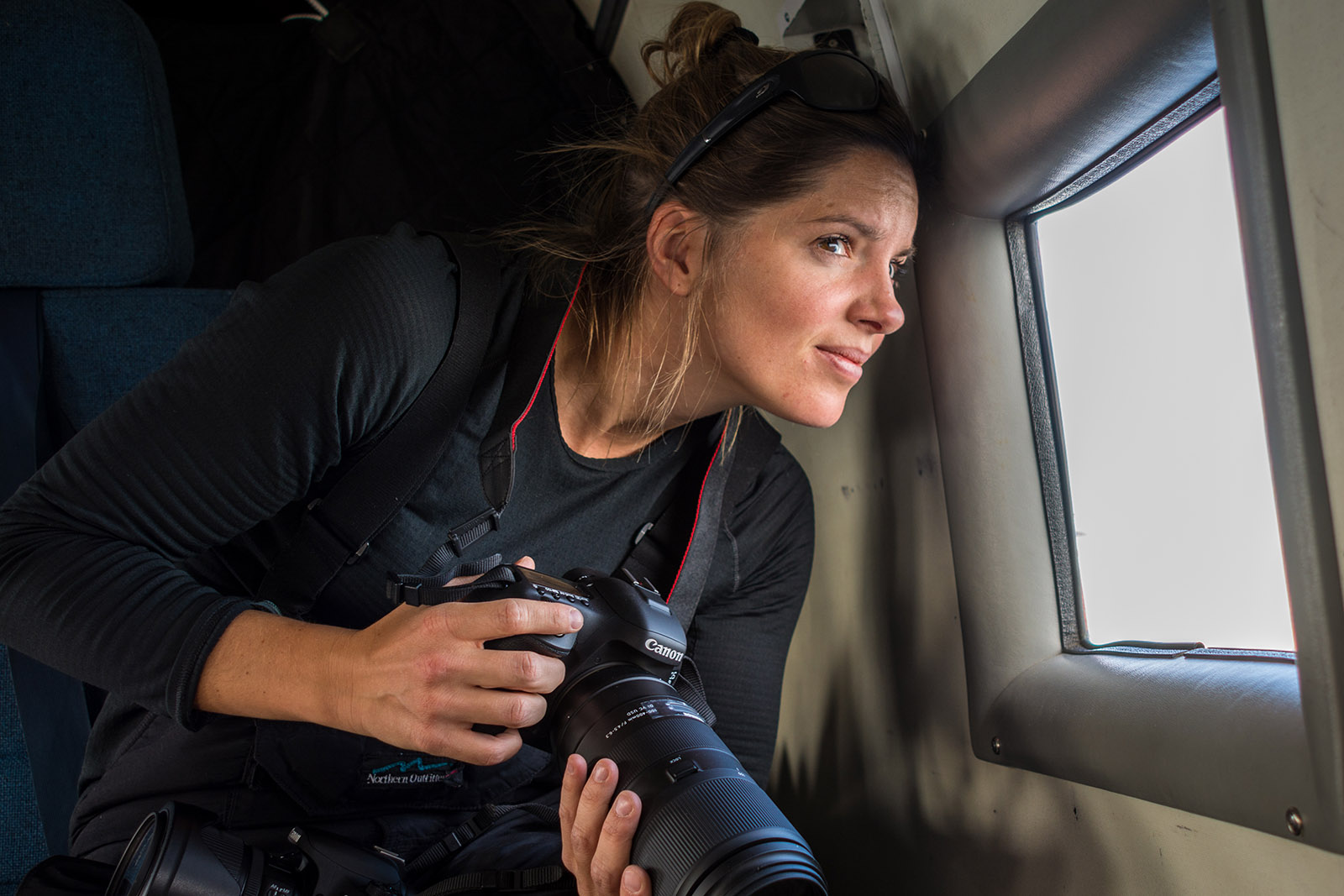
Sara is a CNRS researcher at the LOCEAN laboratory, specializing in Antarctic marine biology, and is deeply engaged in climate issues. Global warming is having catastrophic repercussions on the Southern Ocean, whose physical and biological pumping mechanisms are coming to a standstill: less carbon absorbed by the sea / slowing of the planet’s major temperature currents / contraction of pack ice / threat of extinction of “sentinel species”.
Each year she goes to Adelie Land to studie seals and penguins in the Antarctic. She is seeking to understand the interactions between these marine predators, the ice pack and the physics of the ocean. She tags small GPS devices to seals that dive to depths of 500-600m in areas that are inaccessible to humans, in spite of all their tools. This provides information in real time about the environment, behaviour under the ice pack, and the temperature and salinity of the ocean.
Not long ago, she witnessed Ponant’s luxury polar cruises polluting the pack ice and disturbing animals that have never seen humans before. Just for fun! Outraged, she alerted Le Monde newspaper to stop this absurd practice. Sara and her colleagues are sounding the alarm, but they are up against cultural denial, based on the sense of superiority of human beings, caught up in their Promethean dreams. In this respect, Sara questions “her science”, which is essential in providing evidence, but which emits CO2 and disturbs species.
Ultimately, she wants to build an “ethical relationship” (Gilles Boeuf) that will perhaps be recognised when humans accept the joy of growth.
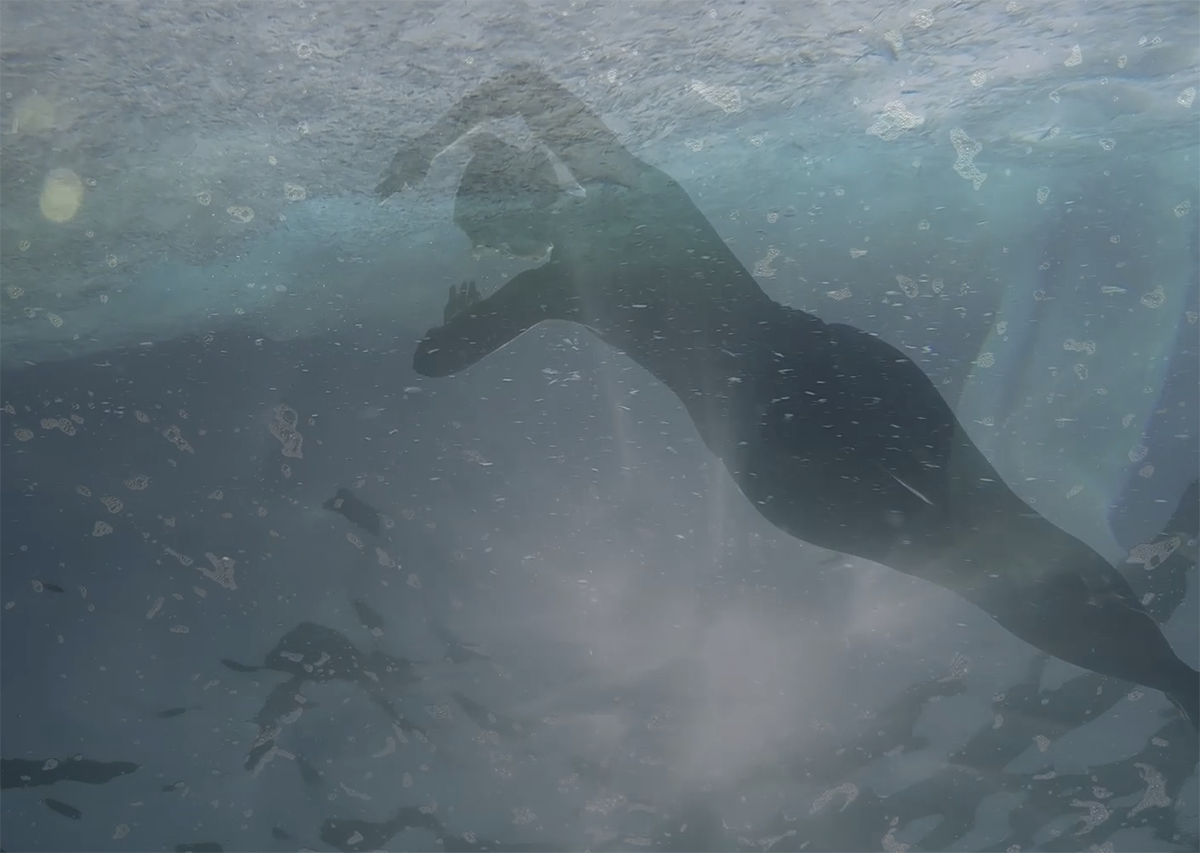
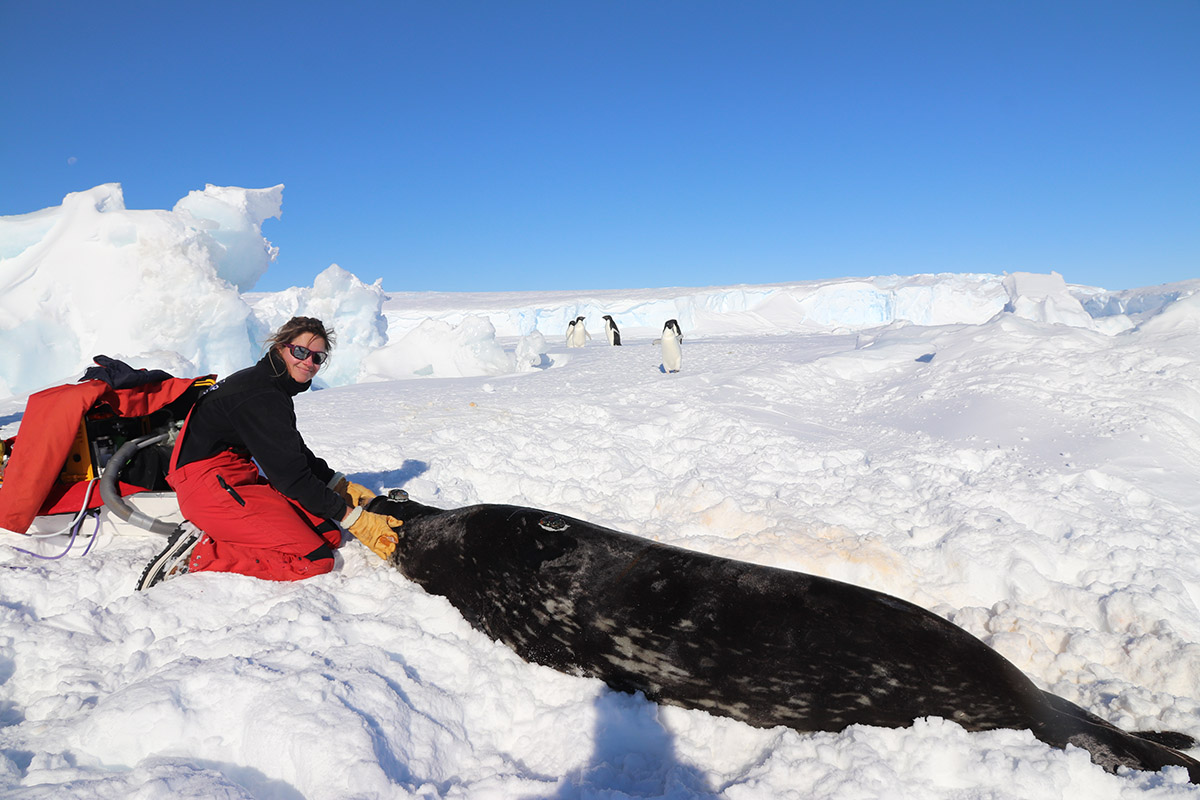
©Sara Labrousse
Final scene in the film
Underwater, Sara enters into contact with marine animals. She dances in harmony with them, an emblem of reconciled humanity.
– Tomorrow ?
“Why is our freedom considered superior to that of other species? We need to erase the boundaries between sapiens and the rest of the living world”.
Marie-Pierre
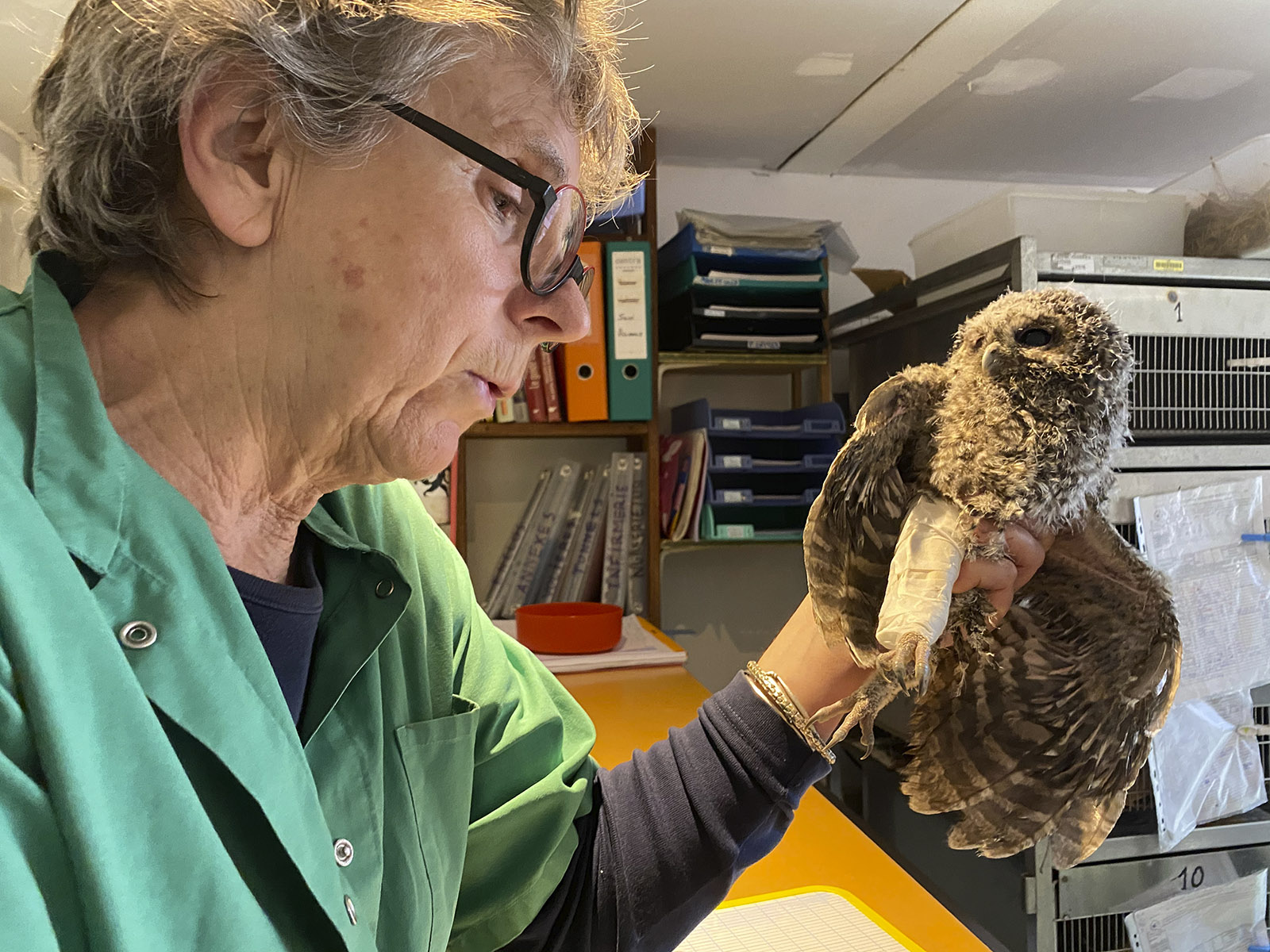
Veterinary surgeon in Ganges at the Hôpital de la Faune sauvage she receives the many animals that have fallen victim to human activity: burns from high-voltage power lines, traps, bullet wounds, poisoning from pesticides or rat poison… A team of volunteers is there to care for the animals, who stay there for the time it takes them to recover and be repaired, before being set free in public. This is when the lady of the fauna sounds a warning by trying above all to treat humans.
She also wages a political battle against inhospitable town planning by stopping a building site in the centre of Ganges to count the number of destroyed swallow and swift nests, both protected species. For the past 20 years she has been involved in reintroducing vultures and establishing places where dead animals can be deposited, a natural way of dealing with the carcasses, that is free and supervised.
Because she knows that our history on earth is rooted in the co-evolution of all living species, she supports research at the Natural History Museum in Paris by systematically sending samples of blood and saliva from all the living and dead animals that pass through her hands. “Understand how it works,” she says.


Final scene in the film
Marie-Pierre stands in the middle of the 190-acre Nicouleau estate she has just bought, with young Manon at her side: it’s her generation that will rise to the challenge.
– Tomorrow ?
“It will be an ecological corridor with pre-constructed shelters for each species. There will be care, education, awareness-raising and research on living things. A place for art. In short, a place where humans and animals can come together in peace”.
Isis

She is a British-born artist. It is through her work on wild animals that I first met Marie-Pierre and her wildlife hospital, where Isis sketches the convalescents every month. Her prints bring out the inner nature of the subjects, revealing their influence on us and some of their mystery. Wordlessly.
In an earlier version, the film began with the Lascaux cave, whose drawings shifted to the hands of Isis drawing with charcoal. These first gestures established modern man in a cosmogonic relationship with animals. A mythical “friendship” that continues today within another different ecology but that still seeks this link. The cave has disappeared from the script, but what remains is the correspondence between the English artist and the animal world of the first peoples, who still pass on their cosmogonic heritage to one another.
Her works appear in the course of the story, linking in a timeless dimension the three other sentinels of life at work with marine predators, free-living fauna, and animals victimized by human rapacity.
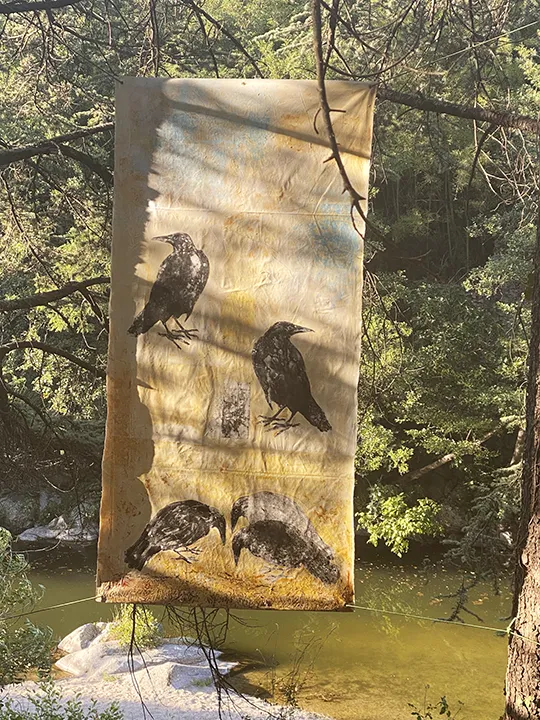
Final scene in the film
Isis takes down the crow paintings. This scavenger is a mythical animal for many primitive peoples in the northern hemisphere, where it can be regarded as an intermediary between life and death.
As a demiurge, it creates a world of clumsiness owing to its hopping behaviour, shamelessly perching on tables. Which explains why the crow is seen both as a rascally magician, and a benefactor of mankind.
– tomorrow ?
It’s up to us to bring back these stories of ancestral human/animal complicity back into the great Western narrative concert.
Francine

She lives alone in the mountains of the Cordillera Cantabrique where she has found a hovel in an abandoned village. Surrounded by domestic animals diescared by the locals, she is also connected to otters, an eagle, wolves in a small pack, a spider’s web, and a bear that appreciates her beehives. She makes no distinction between “her” animals and the others, all part of “the same family”, she says. Her lack of fear of the big predators she comes into contact with is part of her understanding of the world. These interactions affect a woman who arrived here with a malformed ribcage; they have given her renewed breath, sharper eyesight and more acute hearing, she says.
“Each animal brings its own way of understanding the world through its own way of living in it”, says Francine. Obviously a bear or a wolf won’t understand what I’m doing here, but they understand my marks well enough not to attack me. We live together with respect for the fragility of life”.
She reacts to the slightest damage to her environment: pesticides dumped into the river, the disappearance of swallows and bats, leading to an increase in the mosquito populations, and above all a tourist scheme to transform her little forest path to make way for quad bikes. That’s when she sounds the alarm! It doesn’t stop her from taking the bus into town to buy in a super market cat food and candles, and using lots of plastic bags. An Iphone now connects her to her cancer-stricken mother in France, who played a central role when as a child she had to sleep and grow up in corsets until the age of 9.
Far from being an ethereal figure seeking inner enlightenment, she remains human and pragmatic.

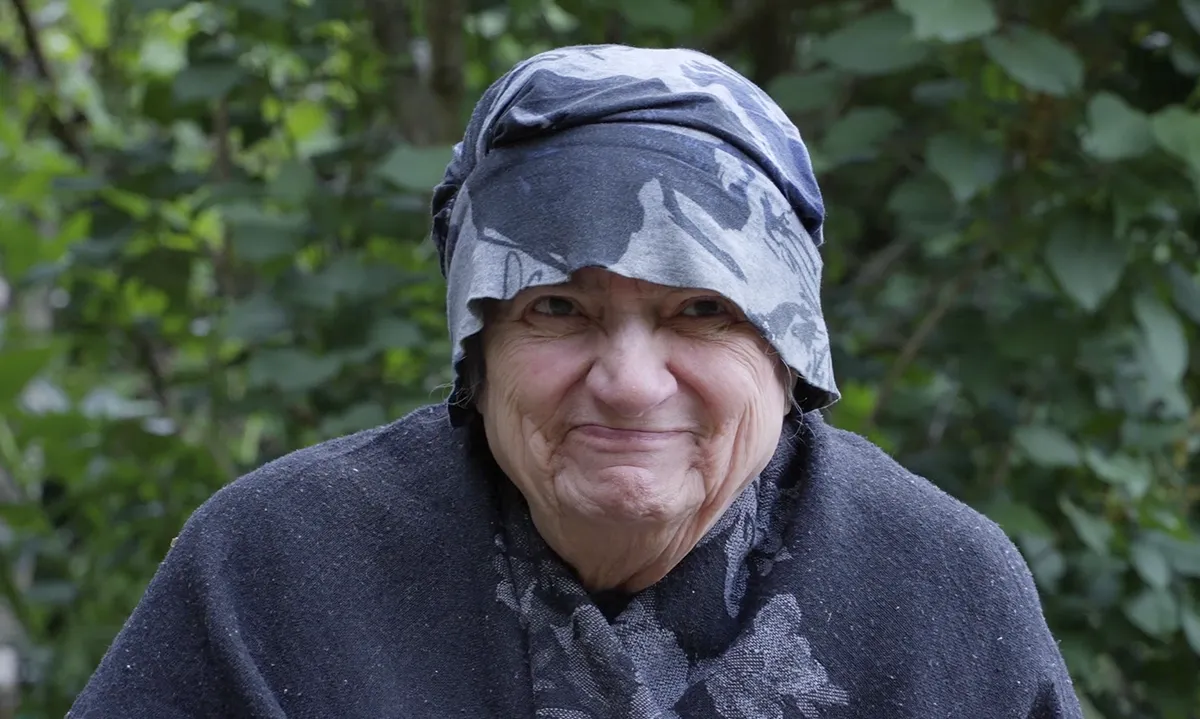
Final scene in the film
Her mother, suffering from a brain tumour, goes out into the garden with the help of her daughter. To avoid having to go to a nursing home and palliative care, she suddenly arrived at the foot of the mountain driven from France by a friend. Francine, equipped with a chair, helped her up the mountain. It took all day.
– Tomorrow ?
Jeannine is tending to her illness among the roses, without any sanitary facilities, heating or chemical drugs. The daughter wants to offer her mother a dignified death, just as her mother offered life to the newborn baby she was, left for dead by the doctor.
”It’s my turn to take care of my mum”
Animus femina traces the journey of four weavers of worlds, a journey subject to the destruction of ecosystems. They act as watchdogs, rethinking our ways of being on earth without set boundaries: the environment produces organisms just as organisms produce their environment. We are ecosystems. Our bodies contain more allogen cells than human cells. Where is the boundary between animal “them” and sapiens-sapiens “us”? This vertiginous, complex interweaving opens the door to the key questions that echo at the end of the film’s four female journeys. ‘Life, love, death’ like the song says. And the myth.
LIFE • Protecting living things. With her scientific yet sensitive view, Sara tags seals and dives underwater “to dance animal” (Faccini).
LOVE • Sharing the same space. By buying new territories hybridized with animals and humans, Marie-Pierre links actions and convictions.
DEATH • Finding the right way to die in a garden full of roses and animals. Because this is the meaning of life that Francine has received.
MYTH • Approaching the mythical beauty of the cave paintings of animals, because it still grounds us in our relationship with the symbolic. The animal art of Isis penetrates our eyes and our dreams.

THE MUSIC OF PIERS FACCINI
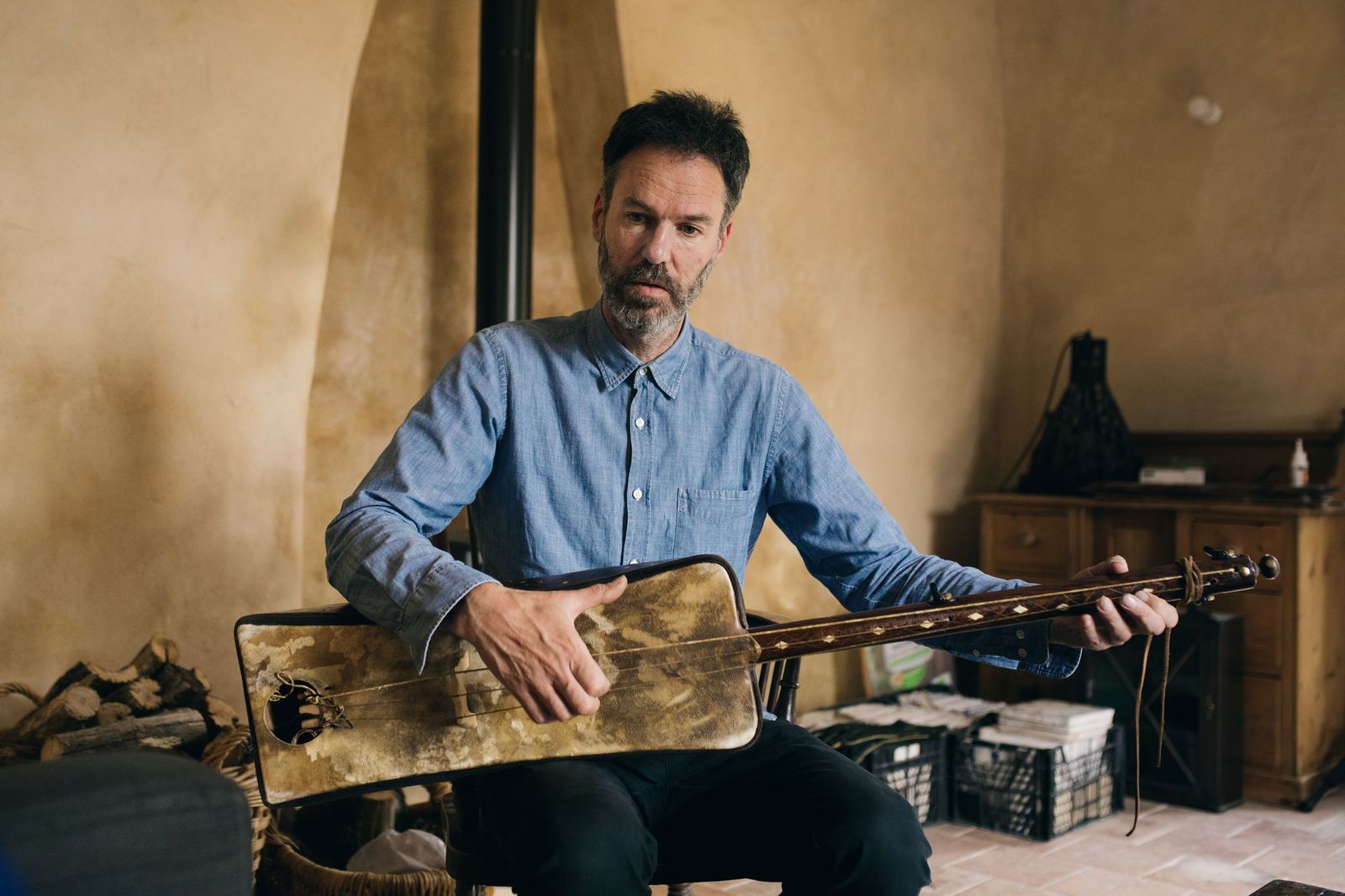
©Sandra Mehl
To shift away from the centrality of sapiens and finally recognize the existence of multiple worlds, the film’s music cannot be overbearing, as so often happens in cinema. Instead, it must interact. Sometimes, it’s invited to be there in full. Sometimes porous, with breathing spaces to allow the sounds pass through. Sometimes like a comma, like a small link.
This is precisely the strength of Piers Faccini’s music, deep-seated in a form of vulnerability. An Anglo-Italian poet living in the Cévennes region of France, where he listens to the birds every day, and climbs the dry-stone walls and terraces that once allowed the people of the past to eke out a living from these rugged mountains. The earth holds a memory from which Piers draws inspiration, as he diffuses his voice and instruments in the spring water, the dry trees, the awkward morning sun, the tattered blue atmosphere. He conjures up a music of life that we listen to, breathe in, dance to, eat, walk to, touch and retain.
From the first mist that opens Animus femina, the musical momentum is set in motion, and is woven throughout the story. It encircles the rescue attempts of a baby fox. It accompanies the mad rush of ungulates terrified by the hunt and explosions. It pauses silently before the wailing of a lupine night. Piers says he “likes films that don’t have too much music”.
We share the same desire to join forces so that, one day, all lives will remain anchored to the body of the blue planet.
STAGE DIRECTION
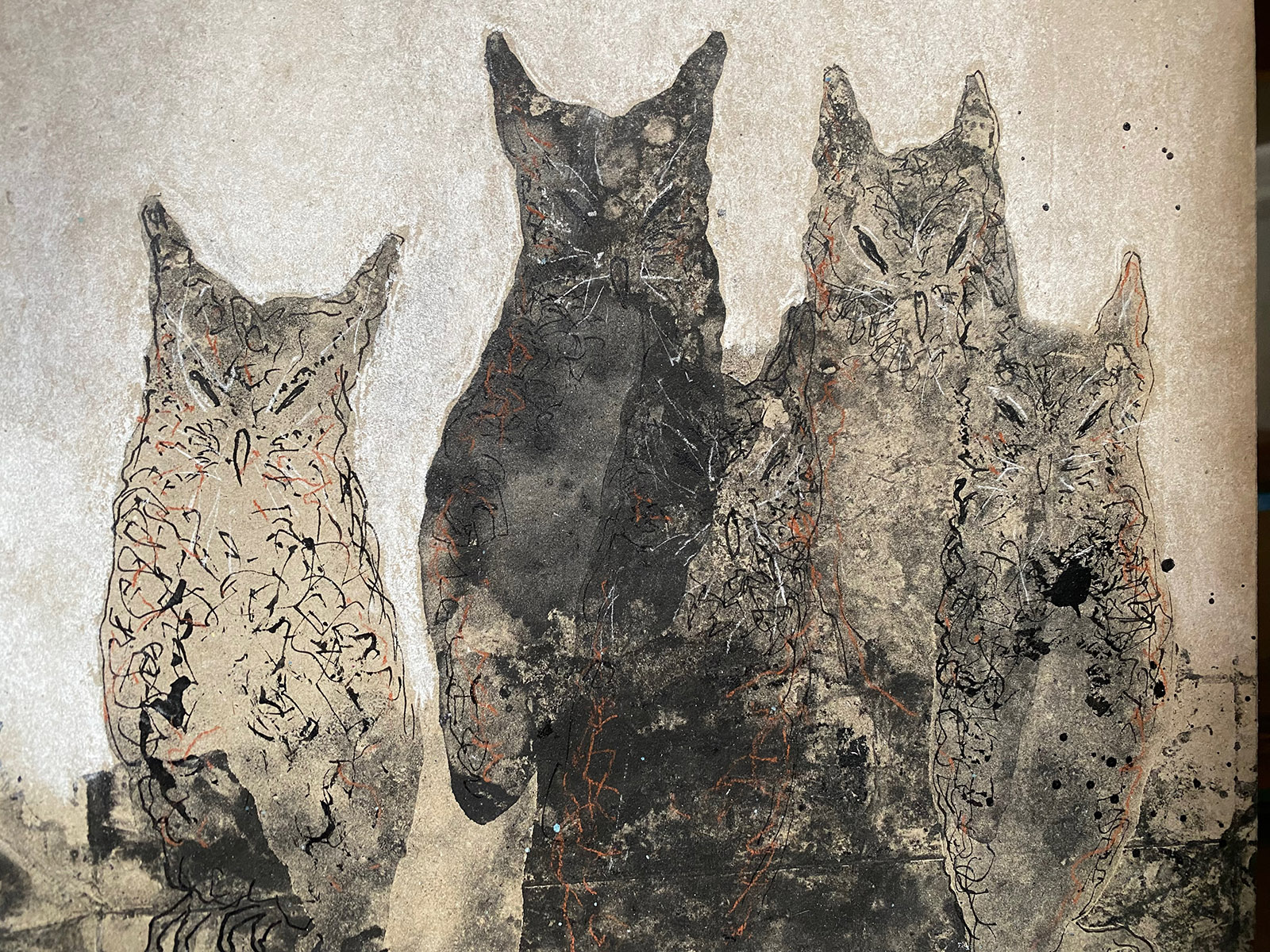
©Isis Olivier
The film narrative explores the relationship between humans and the wild, in various facets arranged as a game that is both semantic and pictorial, based on a narrative in three parts. The scene opens with mythical harmony, followed by chaos from which no one escapes, and finally, the hope of reweaving the living worlds together.
Each character has their own unique voice treatment.
Marie-Pierre is filmed in the midst of her actions. She speaks constantly, to herself, to others, to the camera. This gives a synchronous intelligibility to the scenes, without ever giving the impression of being lectured to or listening to an interview. We understand that this is just the way she is.
The woodland dweller speaks in voice-over mode. This corresponds to the rare moments when Francine pauses to allow a truth to emerge, ceasing to lecture that distant humanity she harangues without really being familiar with it.
Isis creates in silence, a political silence. She is committed to rehabilitating vultures, a vilified species often the object of illegal shooting. She denounces the chaos of it, pointing out the causes of death on her prints of the corpses.
The precision of her strokes, distinguishing one individual from another, creates an emotion that unites us with their way of being.
Sara occupies two filming locations, in France and in Antarctica, where we could’nt go. The staging of the film complies with these constraints. She is filmed with live sound in her laboratory and in Mercantour. But for the scenes in Antarctica, we use voice-overs of pictures taken by her on the pack ice, as well as those of Jean-Benoit Charrassin, director of the Locean laboratory. He was generous enough to take my film equipment with him when he went to Adélie Land. He took his own shoots and all the shots I needed: landscapes, researchers, marine predators, of which he is also a specialist.
He put me in touch with Simon Targolwa audio acoustician wintering at the French base of Dumont d’Urville, who gave me his observation sounds and a few more precise sounds that I had asked for. Rare sounds captured by a researcher who records animal sound emissions to understand their interactions.
Sara’s voice-over is ultimately at the right distance. It allows for greater flexibility in the dreamlike dimension of the ice cliffs, the infinite sea and the floating icebergs that border the pack ice, where snoring seals bask and Emperor penguins follow the footsteps of humans they’ve never encountered.

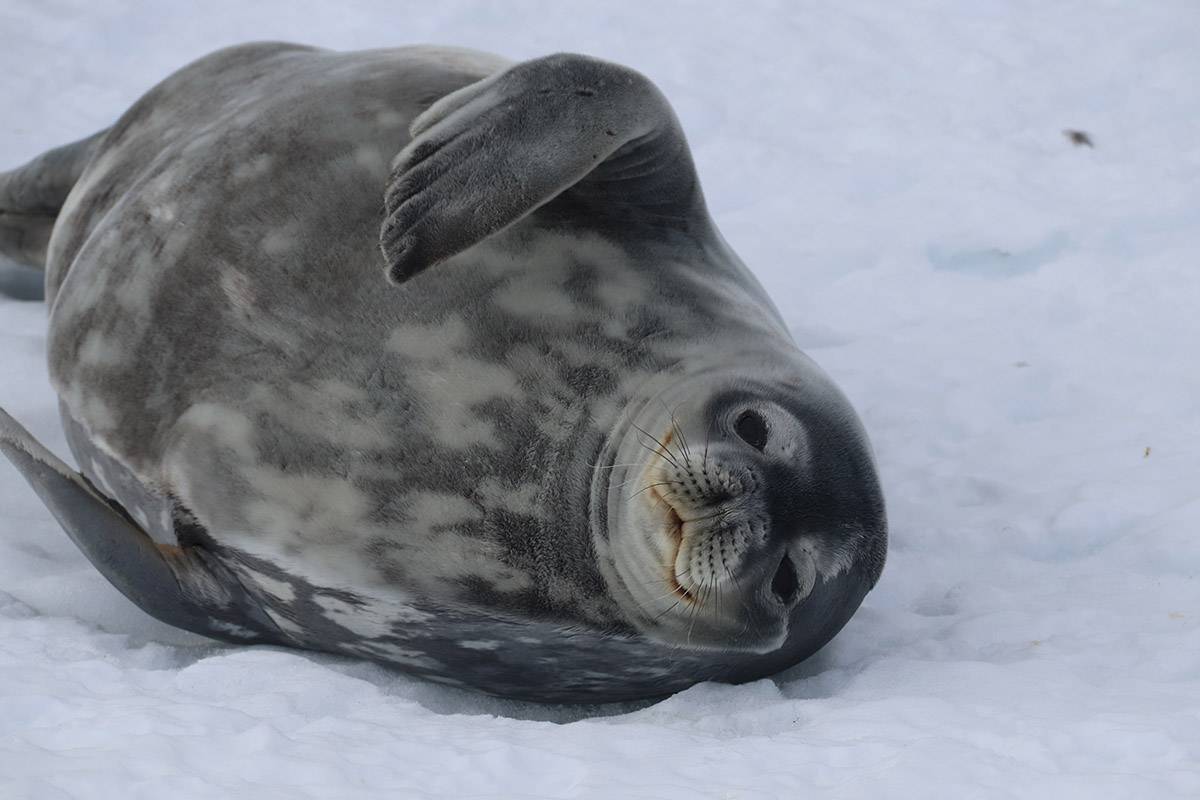

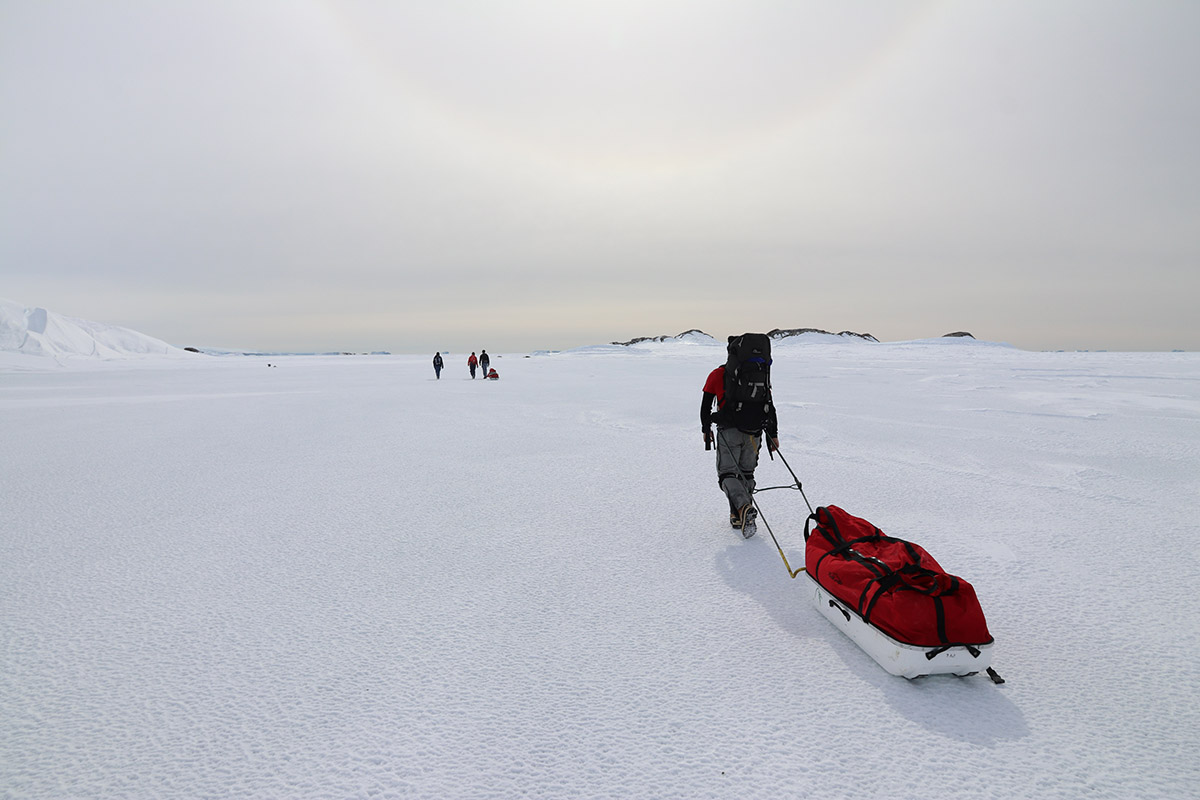
©Sara Labrousse and Jean-Benoît Charrassin
IMAGE

At first I thought I needed an animal cameraman, as I was so interested in the beauty of animals. But I soon realized that we weren’t doing the same job. Animal films are based on the camera and the equipment of cosmonauts. Geo or Wald Disney have imposed a perfectly crafted aesthetic: every feather on the blue tit must be visible, every hair on the bear’s whiskers can be counted, or worse, where a bird is objectified against a blurred background, often the subject of kitschy postcards.
A sound presence often precedes the animal’s appearance, which can be intense or fleeting, like the crunching of leaves with a cry and a fuzzy, fleeing paw. And it’s enough. It’s the mystery that keeps us alert.
What’s more, I was certainly looking for animals, but in their relationship with humans. I worked with Lucien Roux, a young cameraman, who has a sense of the magic and light that surrounds these encounters; for him, half a horn evokes the whole ibex a bit like Vincent Munier whose innovative work I really like.
PRODUCTION
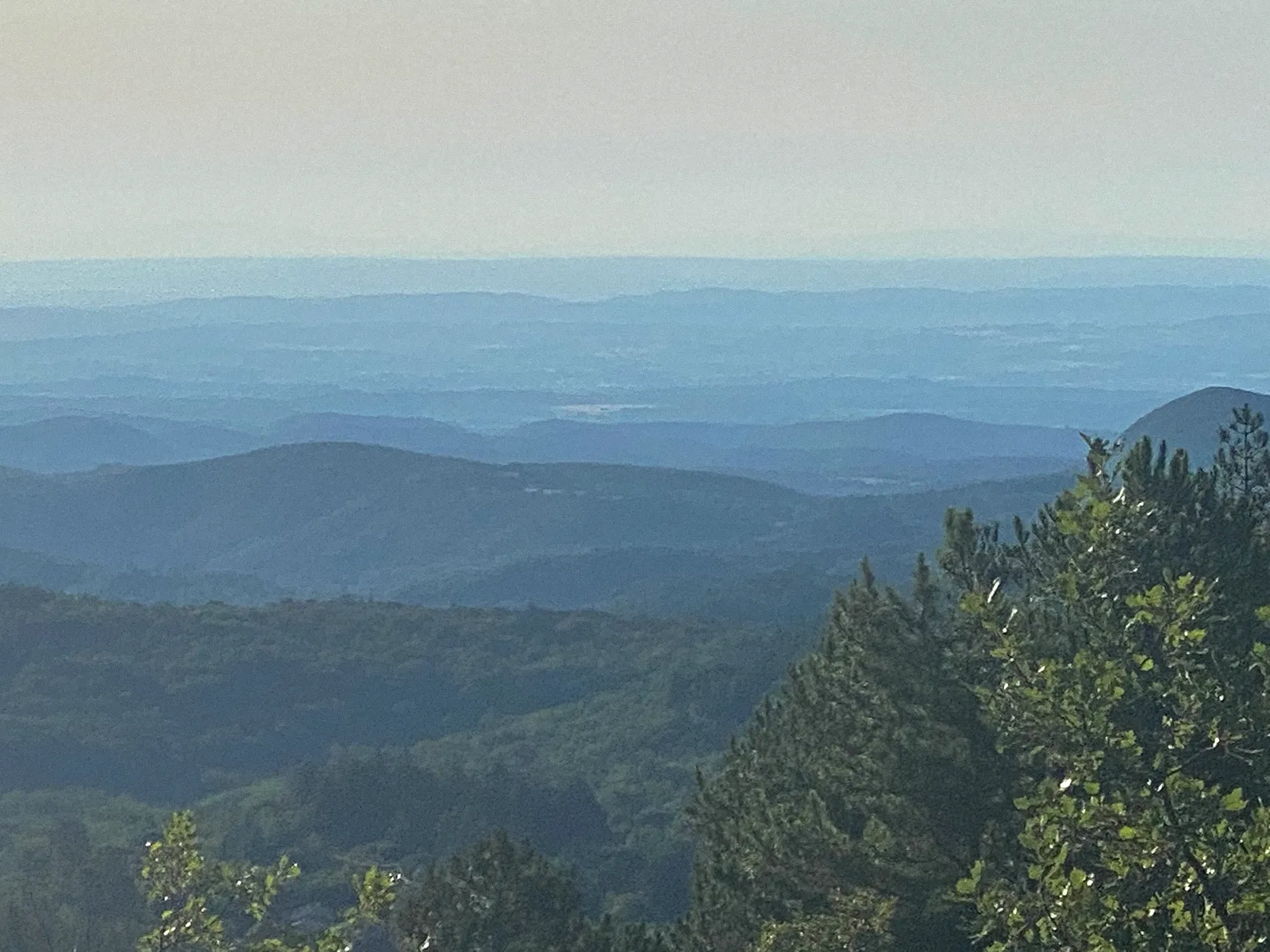
Cévennes bleues
I started out with Les Films du Tambour de Soie in Marseille, and then the production company Les Films d’Ici Méditerranée came on board, headed by Serge Lalou. I’d already worked with him on several films, both fiction and documentary, which were in the official competition at Locarno and Berlin. To be more in tune with the back ground of the film, I moved to the south of France for over a year. I was close to the production and shooting locations, often in the Cévennes, where Isis, whom I’ve known for decades, took me to see Marie-Pierre. Isis is a local councillor in a village where my brother is mayor and where my Protestant relatives have their roots.
As an anthropologist and filmmaker, I’ve always made films based on my research fields, and while this film doesn’t exactly follow this rule, it’s impossible for me to think and write without a concrete, empirical relationship with hands-on experience. I don’t believe in the administrative scheme of financial management in French cinema: 1) You write 2) You scout for locations 3) You shoot 4) You edit 5) You finish post-production and you distribute.
As I write, I need to observe and shoot – my ideas fall into place as I edit the rushes – editing sharpens the return to writing that helps me build the narrative, which reorients the next shoot.
Bouncing from one point to another, I’m like a billiard ball, which doesn’t make it easy for the production team to work within the confines of administrative structures. Compromising between rules and practices calls for energy, flexibility and time. Serge is a producer who always places himself in the very film’s present. What has to be done has to be done. Without preconceptions, without reference to other models, without any bad faith. Playful and intuitive, he seizes every opportunity to work his way through, with a taste for risk and confidence in cinema’s ability to surpass itself. A rare thing in these bound times. He is surrounded by a fine team, to whom I owe a great deal: Corinne Cartaillac, Marie Martin, Angèle Perrotet.
Animus femina is part of a wider project by Les Films d’Ici: to produce a collection based on the living, with stories built around new ways of being in the world.